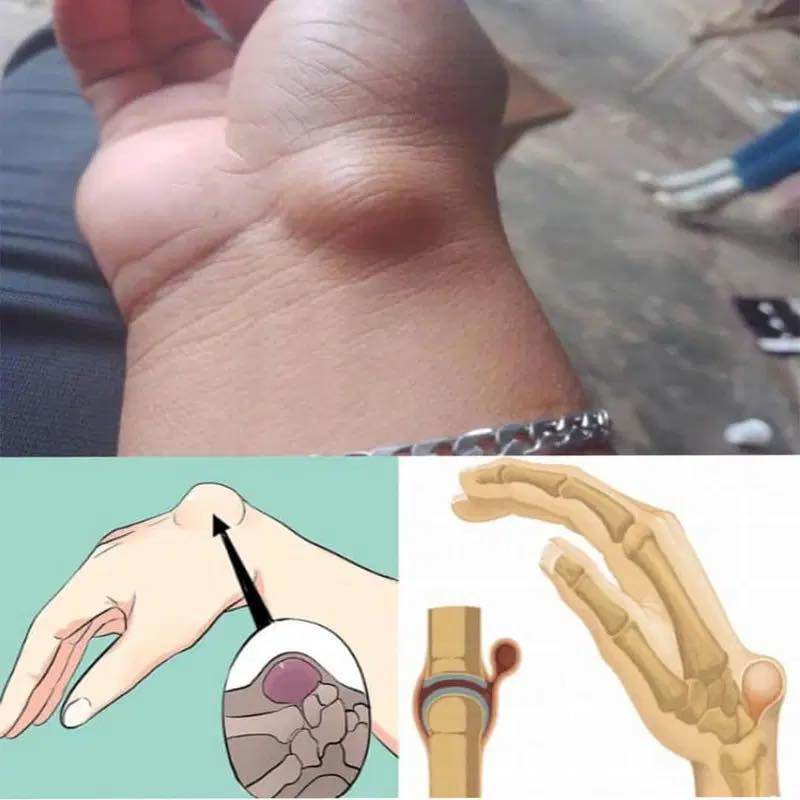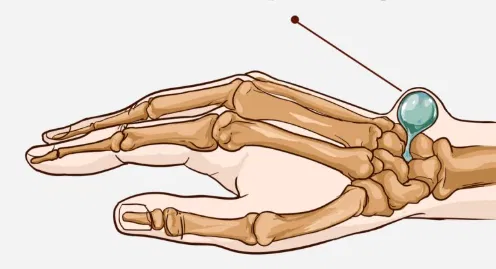

A wrist ganglion, also known as a synovial cyst, is a fluid-filled lump that commonly appears on the back or front of the wrist. While it is generally harmless, it can sometimes cause discomfort, pain, or restricted movement. Understanding the causes, symptoms, and treatment options can help manage this condition effectively.
What Causes a Wrist Ganglion?
A wrist ganglion forms when synovial fluid, which lubricates the joints and tendons, accumulates in an abnormal capsule or sac. Though the exact cause isn’t always clear, several factors may contribute to its development:
- Repetitive Wrist Movements: Activities like typing, writing, or playing sports put stress on the wrist joint, increasing the risk of cyst formation.
- Previous Injuries: A past wrist sprain, trauma, or fracture can trigger ganglion cyst formation.
- Arthritis: Osteoarthritis or joint inflammation may contribute to the development of wrist ganglions.
- Genetic Predisposition: Some individuals may be genetically inclined to developing ganglion cysts.
Common Symptoms of a Wrist Ganglion

Ganglion cysts can vary in size and firmness, sometimes growing or shrinking over time. Symptoms may include:
A visible, soft lump on the wrist
Pain or discomfort, especially during wrist movement
A sensation of pressure or numbness if the cyst presses on a nerve
Reduced mobility in severe cases
Treatment Options for Wrist Ganglions
The best treatment for a wrist ganglion depends on its size, symptoms, and impact on daily activities. Here are some effective options:
1. Observation (Watch and Wait Approach)
If the cyst is small, painless, and does not interfere with movement, doctors may recommend monitoring it over time, as some ganglions disappear on their own.
2. Immobilization
Wearing a wrist brace or splint can help reduce pressure on the joint, preventing the ganglion from growing and alleviating discomfort.
3. Aspiration (Draining the Fluid)
A doctor can remove the fluid with a needle (aspiration), providing temporary relief. However, recurrence is common, as aspiration does not remove the cyst sac.
4. Surgery (Ganglion Excision)
If the ganglion causes persistent pain or limits wrist mobility, surgical removal may be the best option. Surgery has a lower recurrence rate compared to aspiration, as it removes the entire cyst sac.
When to See a Doctor
While ganglion cysts are not dangerous, you should seek medical advice if:
- The lump grows rapidly or changes in texture
- You experience persistent pain
- It causes numbness, tingling, or weakness in your wrist or fingers
- Wrist movement becomes restricted
Final Thoughts: Managing Wrist Ganglion Cysts
A wrist ganglion is a benign condition, but if it causes discomfort or limits mobility, treatment options are available. Non-invasive methods like bracing and aspiration can provide relief, while surgical removal may be necessary for severe cases.


